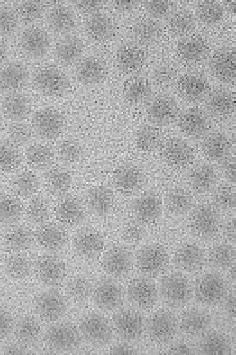Environmental Engineering Reference
In-Depth Information
particles with less active organic layers (e.g., surfactants, amphiphilic polymers) is
another way to control aggregation.
When surfactants are used to coat NMs, the hydrophobic "tails" of the
surfactants physically absorb on the NMs surface while the hydrophilic "heads" inhibit
flocculation and allow for suspension in the aqueous medium. Lai et al. (2008) reported
that addition of surfactant called oleyamine [CH
3
(CH2)7CH=CH(CH2)7CH
2
NH2] during
the thermal decomposition of iron pentacarbonyl could synthesize a non-aggregated and
highly monodispersed NZVI. As shown in Fig. 15.6, the NZVI could disperse freely
without aggregation most likely because the oleyamine coating on the NZVI surface
provided strong interparticle electrostatic and/or steric repulsion to overcome the
attractive van der Waals and magnetic forces. It was found that in a slow mixing
aqueous environment, NZVI aggregation could lead to an order of magnitude reduction
in the NZVI reactivity in reducing water, as compared to that in a complete mixing
environment. Moreover, further controlled oxidation of this non-aggregated NZVI using
an oxygen transfer agent called trimethylamine-N-oxide ((CHs^NO) at 250°C was
reported to be able to increase the crystallinity of the outer iron oxide shell and thereby
prolonged the NZVI reactive lifetime.
Figure 15.6
Transmission electron microscopic (TEM) photos of the non-aggregated
NZVI synthesized by thermal decomposition of iron pentacarbonyl using oleyamine as
While surfactants enable colloidal stability in water, the highly reversible nature
of surfactant absorption limits its application as a delivery system for ground water
decontamination since desorption will be favored when the NP are transported through
surfactant-free ground water. In contrast, high molecular weight, amphiphilic polymers



Search WWH ::

Custom Search